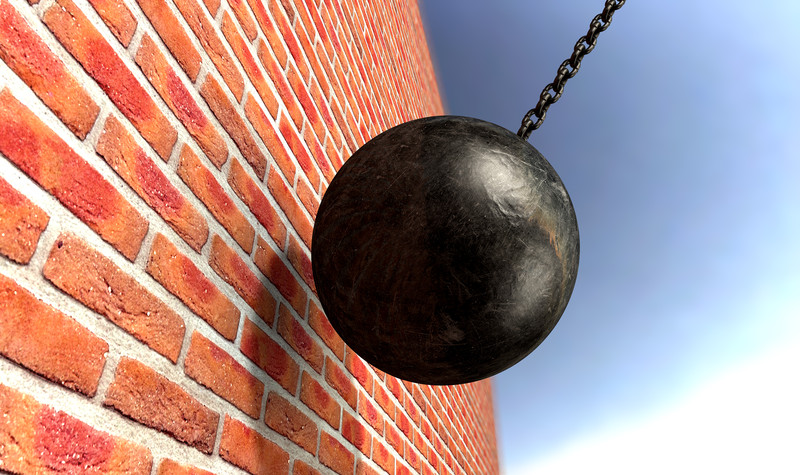
Six IEC 60601 Impact Testing Tips
You spend weeks designing a medical device just the way you want it. After the design is finally approved, you pour your heart and soul into building it just the way you envisioned. Then you hit it really hard with a 1lb steel ball a bunch of times.
Wait. What?
The IEC 60601 impact testing requirements are some of the most nerve-wracking tests a designer can watch happen to their creation. They are however completely necessary to perform in most cases, so it’s best to do it right the first time. Here are some tips to help you understand the methods and avoid any mistakes that might force you to have to do it again:
1- Make sure your device requires this test: There are multiple classes of devices and not all of them require this test. Check the IEC document and remember that hand held devices are exempt from the impact test.
2- Read the fine print: Get a copy of the IEC standard and make sure you don’t miss anything important. For example, did you know that this test is not required for flat panel displays, plate glass, or cathode ray tubes?
3- Make sure that the mechanical design is not subject to change: a switch in vendors after testing is completed means you’re going to have to do it all over again. From the casing to the fasteners, make sure everything is set in stone, or preferably steel.
4- You must clearly define what constitutes a “Pass” and a “Failure” before testing: Often the simple process of completing this exercise will allow you to predict areas of failure and design before going into testing.
5- Decide on an order of testing: typically you want to go from “least likely” to “most likely” when testing what will damage the device. If you are planning on performing each test on one single prototype, make sure no mechanical test will impact (pun intended) any others. In other words, make sure that you follow the approved sequence of tests.
6- Assemble your test equipment early! It can be tough to get a steel ball exactly 500g that is 50mm in diameter. If you know you’re going to need one, order it well ahead of time. Do you have a test fixture 1.3m in height? Can you attach a pendulum to it? Is the floor beneath it typical of what the product will sit on in reality? Will the device be free to move, or should it be fixed in place?
It can also be difficult to attach the ball to a pendulum without affecting the properties of the ball. Decide on a plan in advance and save yourself trouble when the deadline is looming!
Check out the attached video on 60601 Impact Testing to see me perform both the vertical and horizontal impact tests. If you are ready to try it yourself remember to be safe, and happy testing!
This blog references IEC 60601-1 IEC 2005 Section 15.3.3. Refer to the most current version of this document for full information and remember that this article and video are intended as tips, not to be used as official practice
Nigel Syrotuck is a StarFish Medical Mechanical Engineer. He works on Product Development and did not appear to be overly “nerve wracked” while banging the steel ball against metal in the companion 60601 Impact Testing video.
Image: 17766709 © albund CanStockPhoto.com